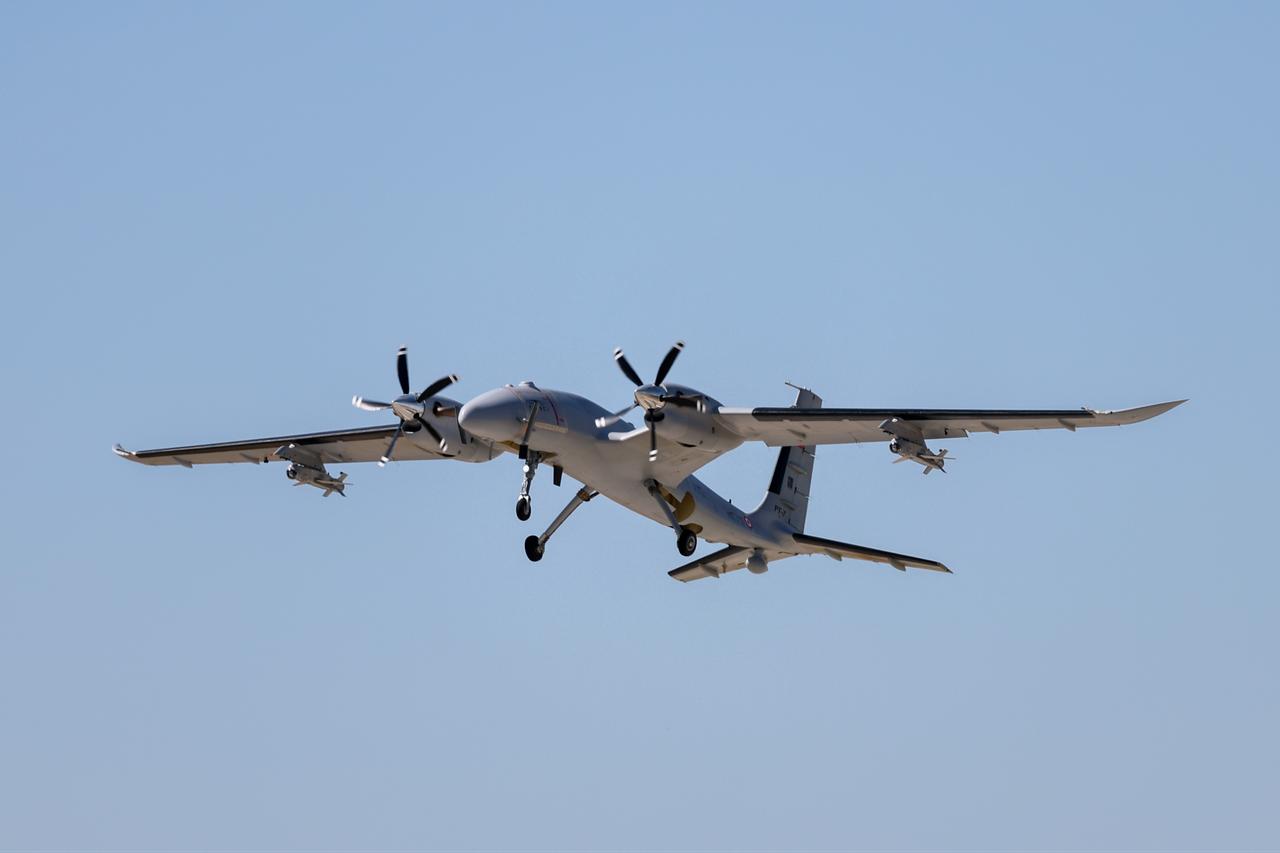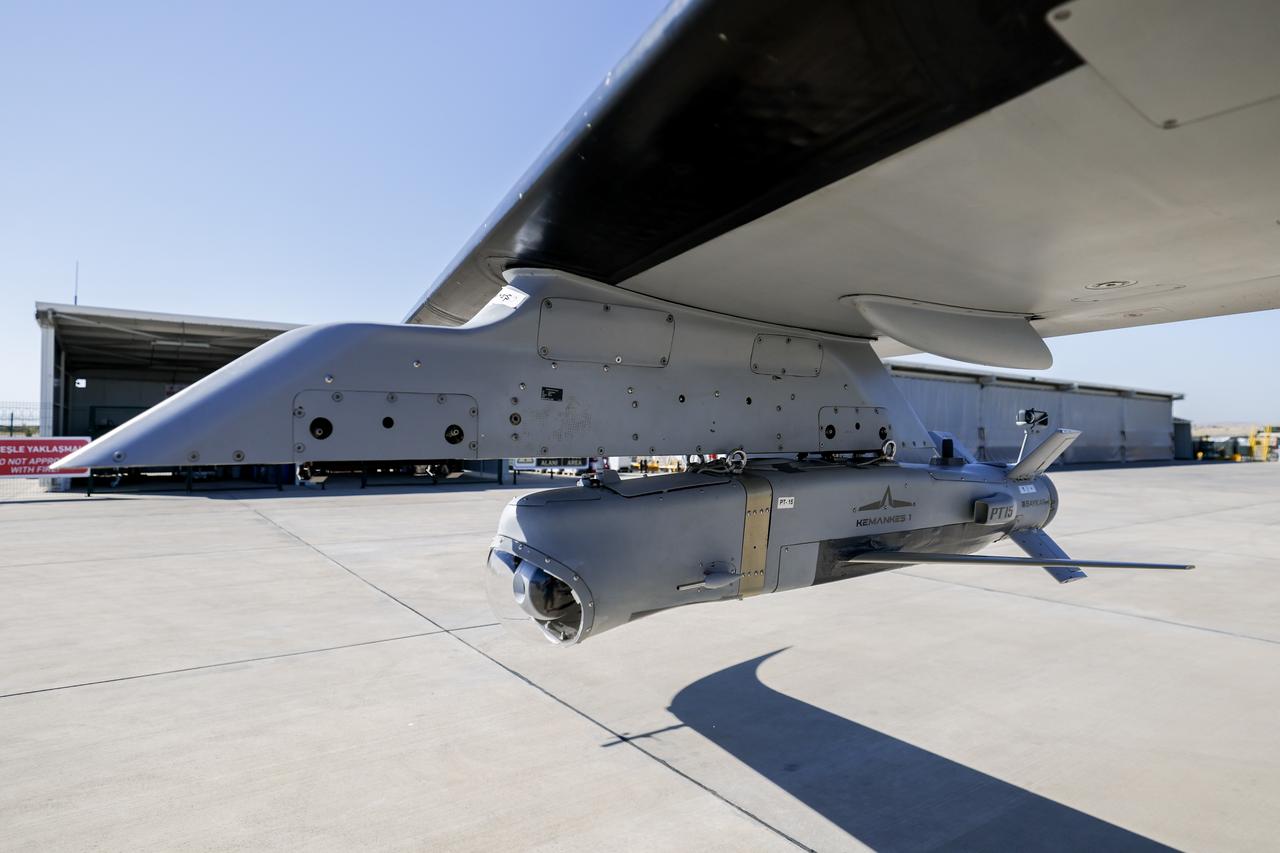
Turkish defense giant Baykar’s AI-powered unmanned systems continue to clear critical tests with success. Last week, the Kemankes 1 AI-Enabled Mini Smart Cruise Missile, fired for the first time from a Bayraktar Akinci UCAV, successfully destroyed an airborne target in a demanding scenario. In Thursday's test, it delivered pinpoint strikes against ground targets as well.
During yesterday’s trial, a Bayraktar Akinci UCAV took off—under the coordination of the Flight Training and Test Centers in Corlu and Kesan—carrying two Kemankes 1 missiles on its wings. The exercise once again evaluated the missile’s cruise, dive, and firing capabilities. As part of the scenario, the missiles were launched at a designated ground target. Guided by Baykar’s AI-assisted targeting system, both Kemankes 1 missiles destroyed the target with pinpoint accuracy. The engagement was recorded from the air by a Bayraktar TB2 UCAV.

Kemankes 1, developed indigenously by Baykar for use against strategic targets, was displayed to the public for the first time at Teknofest 2023, held at Atatürk Airport from April 27 to May 1. The missile’s name honors the archers in Turkish history who could hit their mark with perfect accuracy even under the most demanding conditions.
Kemankes 1 will be integrated with Baykar’s indigenously developed Bayraktar Akinci UCAV, Bayraktar TB2 UCAV, and Bayraktar TB3 UCAV. The mini intelligent cruise missile can remain airborne for more than 30 minutes and, thanks to its jet engine, rapidly close on high-risk targets deep behind enemy lines. +With a mission range exceeding 200 kilometers and an AI-assisted electro-optic guidance system that recognizes its target, Kemankes 1 can deliver pinpoint strikes even in adverse weather conditions.
Equipped with an AI-assisted autopilot, Kemankes 1 can fly autonomously and neutralize strategic targets with extreme precision—shifting the balance of power in combat. Designed for both day- and night-time missions, the missile’s anti-jamming technology keeps it immune to electronic interference. Throughout the flight it maintains line-of-sight communications with its launch platform, relaying all data and imagery back to the ground control station to support operators with data tracking.